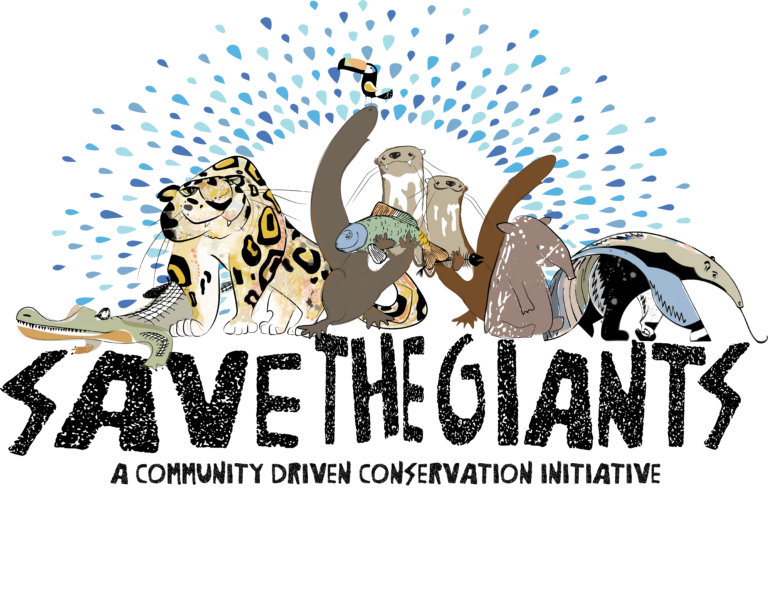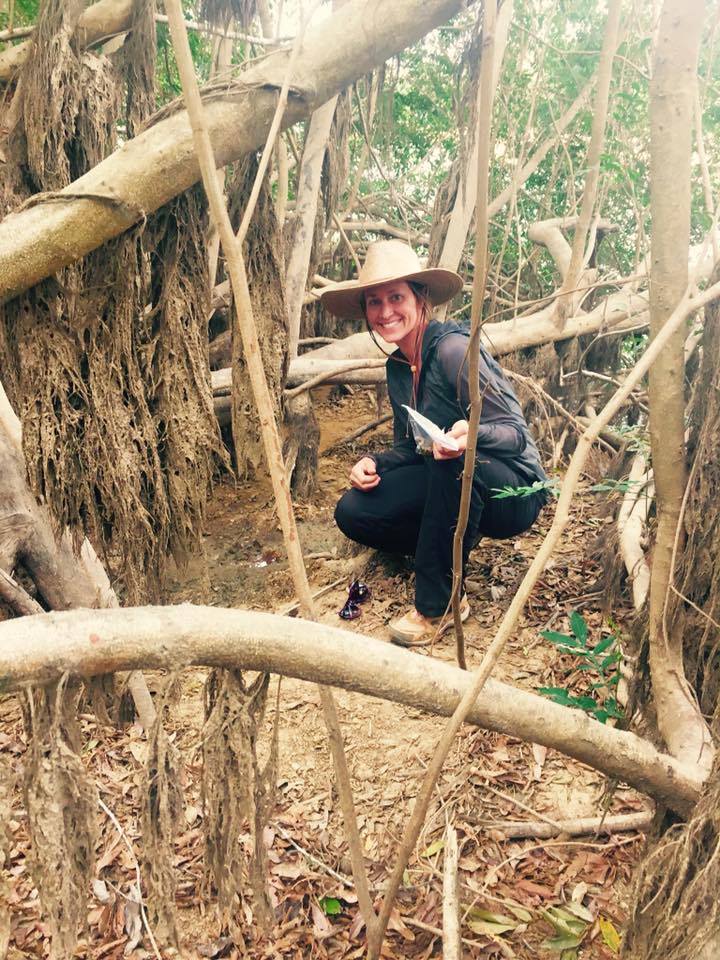

A WORD FROM OUR PRESIDENT
Hello! My name is Christina Ward – I am an artist and conservationist dedicated to preserving the wildlife of Guyana and enriching the lives of the country’s native people. In collaboration with colleagues from Surama Eco-Village, Creature Conserve, a registered 501c3 and my personal business: Colors for Conservation, we are launching the “Save the Giants” conservation initiative. “Save the Giants” will expand upon the giant otter surveys currently being conducted by local Makushi surveyors, Kenneth Butler (Surama) and Oswin Ambrose (Massara), along the Rupununi River in Region 9 of the Guyanese interior.
Please visit our “Blog” pages for more information on the current field surveys.
The focal species for the “Save the Giants” project will be the iconic giant otter; an endangered species whose wild population numbers are merely speculation, due to insufficient data collection. Save the Giants will employ and train indigenous villagers to conduct proper giant otter population surveys and collect fecal samples, which will be used for genetic testing. We will be partnering with the Molecular Ecology Department of Durham University in England to complete the genetic analysis.
As giants are the focal species for data collection, they will also serve as an umbrella species for their wild “giant” counterparts. In addition to collecting data on the otters, the surveyors will collect supplemental data on the surrounding environment and patrol for signs of illegal activity, pertaining to illegal extraction, fishing and poaching. Save the Giants is partnering with Panthera Guyana to develop ways for surveyors to maximize their data collection time on the river and in the field.
As the project evolves and the trained otter surveyors become familiarized with giant otter behavior, opportunities to establish sustainable “otter watch” eco-tours will be abundant. Currently, in country, there are no tour companies who offer this type of encounter. Giant otters, with their playful and communal nature are always a delight to view in the wild, but their aversion to humans must be respected and proper guidelines must be in place when conducting an otter watch tour. Standards for appropriate giant otter eco-tourism ventures have been published by Jessica Groenendjik; communications director with San Diego Zoo Global, Peru. Jessica’s extensive field research on giant otters allowed for the creation of a standardized data collection methodology, which will be used during our otter surveys.
Please visit our “Blog” pages for more information on the current field surveys.
The focal species for the “Save the Giants” project will be the iconic giant otter; an endangered species whose wild population numbers are merely speculation, due to insufficient data collection. Save the Giants will employ and train indigenous villagers to conduct proper giant otter population surveys and collect fecal samples, which will be used for genetic testing. We will be partnering with the Molecular Ecology Department of Durham University in England to complete the genetic analysis.
As giants are the focal species for data collection, they will also serve as an umbrella species for their wild “giant” counterparts. In addition to collecting data on the otters, the surveyors will collect supplemental data on the surrounding environment and patrol for signs of illegal activity, pertaining to illegal extraction, fishing and poaching. Save the Giants is partnering with Panthera Guyana to develop ways for surveyors to maximize their data collection time on the river and in the field.
As the project evolves and the trained otter surveyors become familiarized with giant otter behavior, opportunities to establish sustainable “otter watch” eco-tours will be abundant. Currently, in country, there are no tour companies who offer this type of encounter. Giant otters, with their playful and communal nature are always a delight to view in the wild, but their aversion to humans must be respected and proper guidelines must be in place when conducting an otter watch tour. Standards for appropriate giant otter eco-tourism ventures have been published by Jessica Groenendjik; communications director with San Diego Zoo Global, Peru. Jessica’s extensive field research on giant otters allowed for the creation of a standardized data collection methodology, which will be used during our otter surveys.

Christina Ward
CEO